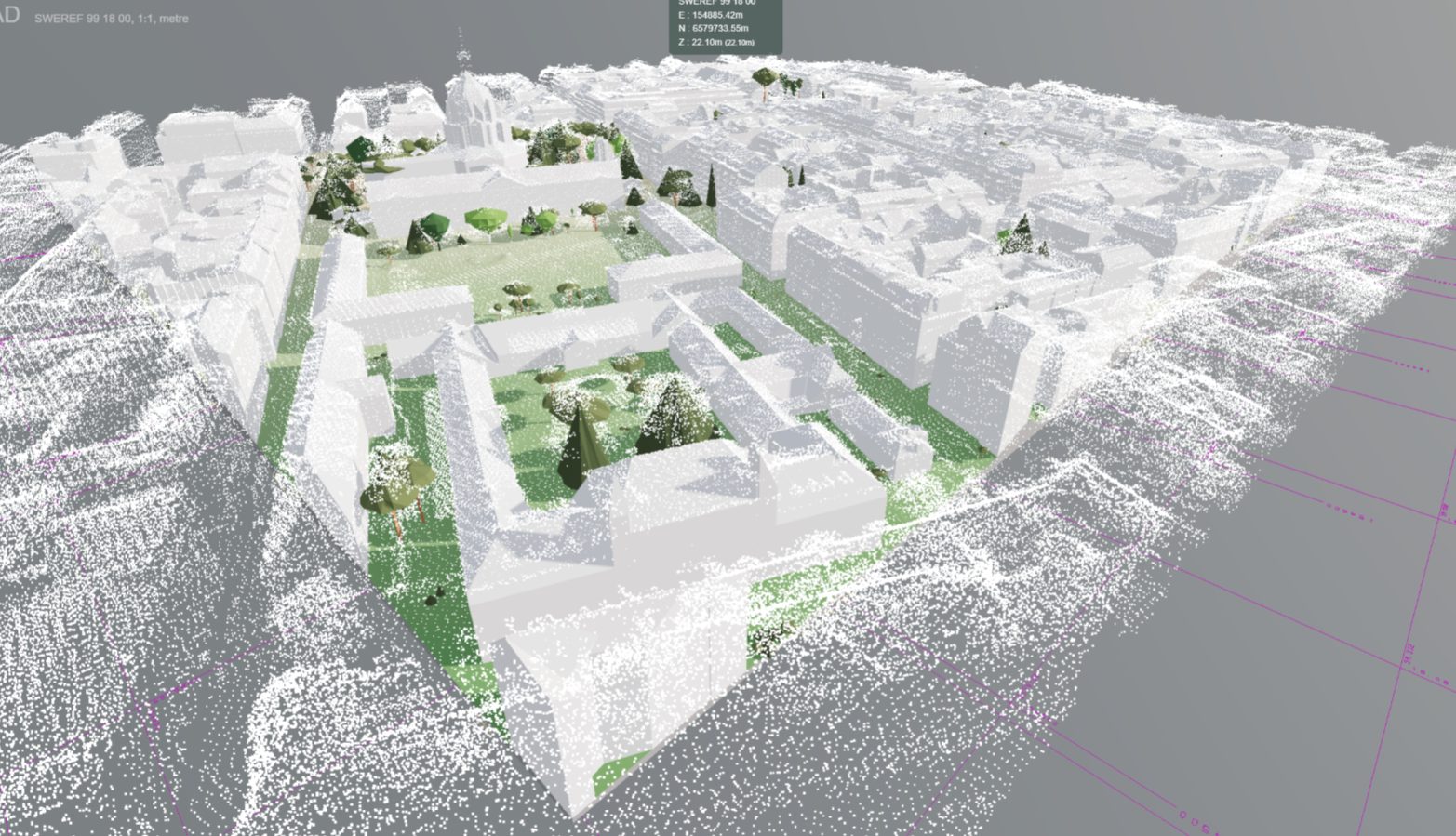For BIM managers, each project is a balancing act between ensuring that your team has access to the right information, keeping coordination across disciplines on track, and maintaining consistent standards without getting pulled into every detail. The pressure can be constant, and the consequences of errors can affect entire project timelines.
This is where Cetopo can make a meaningful difference. By simplifying the way site data integrates into your BIM workflow, it gives you and your team a quicker, easier, and more reliable way to start projects, coordinate with external teams, and maintain accuracy throughout. Crucially, it does this while keeping you in control of how data is managed and used, meaning you have confidence in both the quality of the model and the accountability of the process.
Below, we’ll take a closer look at some of the key benefits that stand out for BIM managers using Cetopo.
Quick Project Setup
Getting a project off the ground quickly can be a challenge when you’re pulling data from multiple sources in different formats (think, 2D CAD from your client, 3D model from an external supplier etc). Cetopo consolidates this process, giving you everything you need from one platform: BIM ready models, CAD files, and vector files for diagramming.
Because it’s all instantly available, you can decide when and how to download the data. With plugins for Archicad and Revit, and native files for Sketchup, Rhino, and CAD, project setup is streamlined from the beginning. Instead of wasting time on manual imports, clunky conversions or cleaning up files you can focus on getting your teams moving quickly.
As Jens from Ronneby Municipality in Sweden put it:
“The biggest thing we like about Cetopo is that you’re taking a pretty complex task and you made it simple to use in a few steps.”
That simplicity extends into the next crucial step: coordination.


Easy Coordination with Smart Geolocation
Almost all projects involve coordination with external parties. Site teams, planning authorities, design consultants; BIM managers know how quickly things can go wrong when trying to coordinate designs. Misaligned models, mismatched coordinates, or even construction mistakes are more than just frustrating: they undermine confidence in the whole process.
Cetopo tackles this through its smart geolocation tools. When used with Archicad, Revit, Sketchup or Rhino models are automatically geolocated in your chosen coordinate system, with correct heights applied. By default the project base point is placed on a convenient grid point to the bottom left of the model, helping to keep everything aligned from the start.
At the same time, you retain full control. If you’re working with an existing project, or if another team has specified a base point, Cetopo allows you to override defaults and set things up as you need. That flexibility means you can delegate setup confidently, knowing the plugin handles the technical accuracy.
Anastasiia Piven from INBO summed it up well:
“As I work with Rhino, Revit and Twinmotion, thanks to Cetopo I can easily link precise terrain, vegetation, and context into all programs simultaneously. This means Cetopo saves me days in time.”

Better Usability with Native Models
Importing external data into a BIM environment often comes with compromises, clunky geometry, limited editability, or heavy models that slow everyone down. Cetopo takes a different approach.
The models it generates are built using native features and components of your design software. That means each individual element is editable, and the model behaves just like something created in-house – no matter which software you use.
For BIM managers, this makes a big difference:
- Buildings are individual objects, so it’s easy to delete ones slated for demolition without affecting others.
- Terrain models are lightweight and editable, so they can be shaped and adjusted as needed.
- Because everything is native, sections cut cleanly and properly – no messy workarounds or masks required.
- Tree models can be automatically replaced with native components – no more lollipops
As one user put it:
“It’s just however good you are at Revit, that’s how good you are with Cetopo.”
To put it simply, these models work with you, not against you.
Control Usage with Custom Templates
Beyond ensuring your team has access to the data they need, BIM management is about maintaining consistent standards without falling into micromanagement. Cetopo’s custom templates give BIM managers the ability to set those standards once, and then let the team work within them.
Higher-level users can define templates that specify how each model element should behave, the level of detail included, and which data sets to use. These templates can then be shared across the team.
For less technical users, it’s as simple as selecting the project area and hitting download; the template handles the rest. For you, it means confidence that no matter who’s pulling data, they’re doing so within your predefined framework.
Summary of Benefits for BIM Managers
For BIM managers, Cetopo provides reliable foundations for delivering projects with confidence. By speeding up setup, ensuring accurate geolocation, and producing fully editable native models, it reduces the risks and inefficiencies that often slow down coordination. Custom templates give you oversight across the team without needing to intervene at every step, helping you maintain consistency and standards at scale.
The result is a smoother workflow, stronger collaboration between disciplines, and more time to focus on higher-value management tasks. With Cetopo, you can trust that your team is working with accurate, well-structured data from the beginning of a project through to delivery.



